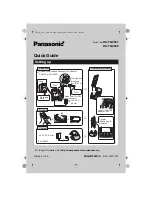
© 2000 Motorola, Inc.
DESCRIPTION
Overall Concept
Cellular systems are used to provide radio-telephone
service in the frequency range of 824-894 MHz.
A cellular system provides higher call handling
capacity and system availability than would be possi-
ble with conventional radiotelephone systems that
require total system area coverage on every operating
channel. The cellular system divides the system cov-
erage area into several adjoining sub-areas, or cells.
Each cell contains a base station (cell site) which pro-
vides transmitting and receiving facilities. CDMA is a
“spread spectrum” technology, which means that it
spreads the information contained in a particular sig-
nal of interest over a greater bandwidth than the
original signal. With CDMA, unique digital codes,
rather than separate RF frequencies or channels are
used to differentiate subscribers. The codes are shared
by both the mobile station and base station and are
called “pseudo-random code sequences”. Since
CDMA is a spread spectrum technology, all users
share a range of the radio spectrum. CDMA cell cov-
erage is dependent upon the way the network is
designed. For each system 3 characteristics must be
considered: coverage, quality, and capacity. These 3
must be balanced for desired lever of perfor-mance.
Some of the CDMA benefits are:
- Improved call quality with better and
more consistent sound.
Table 6:
Note
The following description is intended only as a
preliminary general introduction to cellular
systems. This description is greatly simplified and
does not illustrate
the full operating capabilities, techniques, or tech-
nology involved in cellular systems.
- Enhanced privacy.
- Variable rate vocoder.
Figure 1:
Hypothetical Cell System
Operation
In Figure 1: “Hypothetical Cell System”, the
area bounded by bold lines represents the
total coverage area of a cellular system.
This area is divided into several cells, each
containing a cell site base station which
interfaces radiotelephone subscribers to the
switching system. Since there are no channels in
CDMA, a user has a better chance of completing a
call. Also, now there is no hard handoff between
cell sites since all sites operate on the same frequency.
This is called soft handoffs. In this system, subscrib-
ers in cell A & D simul-taneously operate in the same
frequency. As a user moves from cell site to cell site,
the base station monitors the signal strength of the
user. Based on this signal strength, the base station
decides which cell shall carry the call. When a radio-
telephone is in use well within a cell, the signal
strength received at the cell site base station will be
high. As the phone is moved towards the edge of the
cell, its received signal strength decreases.
Signal strength information therefore
provides an indication of the subscriber’s distance
from a cell’s base station. This change is handled
CELL B
CELL C
CELL A
CELL D
Содержание V8162
Страница 1: ...CDMA V8160 Service Manual Level III DIGITAL WIRELESS TELEPHONE series ...
Страница 2: ...CDMA V8160 ...
Страница 4: ...CDMA V8160 ...
Страница 19: ...Troubleshooting RFBlock Diagram ...
Страница 20: ...V8160 Audio Logic Side Block Diagram ...
Страница 42: ...V8160 ...
Страница 50: ...V8160 ...
Страница 58: ...V8160 ...
Страница 73: ...Replacement Parts ...
Страница 74: ...V8160 ...
Страница 75: ...Replacement Parts ...
Страница 76: ...V8160 ...
Страница 78: ...V8160 P8 5 Bo Page CDMA V8160 Antenna Circuit ...
Страница 79: ...79 2000 Motorola Inc REPLACEMENT PARTS V8160 V8162 ...
Страница 83: ...83 2000 Motorola Inc REPLACEMENT PARTS V8160 V8162 ...
Страница 84: ...84 2000 Motorola Inc REPLACEMENT PARTS V8160 V8162 ...
Страница 85: ...85 2000 Motorola Inc REPLACEMENT PARTS V8160 V8162 CDMA V8160 TX OFFSET OFF_BASE F_EMIT T FM Pg A15 Page A08 ...
Страница 86: ...V8160 V8162 ...
Страница 87: ...Replacement Parts ...
Страница 88: ...V8160 V8162 ...
Страница 89: ...Replacement Parts ...
Страница 90: ...V8160 V8162 ...
Страница 91: ...Replacement Parts ...
Страница 92: ...V8160 ...
Страница 93: ...Replacement Parts ...
















































